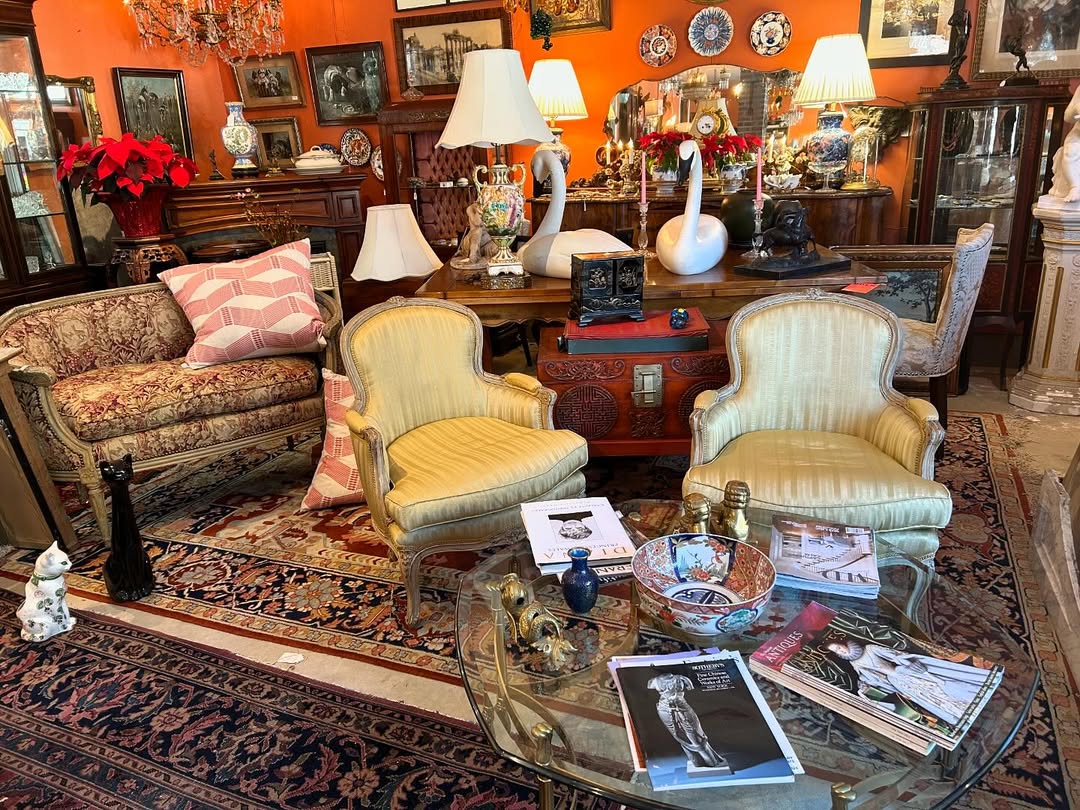Antique collecting is not only a rewarding hobby, but it’s also a way to preserve history and showcase unique, timeless beauty in your home. Whether you’re just starting or looking to expand your collection, understanding the fundamentals of antique collecting is key to making informed decisions and curating a valuable assortment of treasures. From identifying valuable pieces to learning how to care for them, this guide will help you get started on your antique journey.
1. Understanding What Constitutes an Antique
Before diving into the world of antique collecting, it’s important to understand what qualifies as an antique. According to experts, an item must be at least 100 years old to be classified as an antique, though this definition may vary slightly depending on the region. Anything older than 20 years but not yet 100 years old is generally considered a vintage item, which can still be valuable, but doesn’t carry the same weight as true antiques.
When starting your collection, focus on items that truly interest you and have historical significance. Whether it’s antique furniture, porcelain, jewelry, or artwork, having a clear idea of what you’re passionate about will guide your acquisitions.
2. Research and Learn
Before making any purchases, thorough research is essential. Understanding the history, craftsmanship, and value of antiques can help you make better choices. Start by visiting antique stores, attending auctions, and reading books or online resources dedicated to the particular type of antique you’re interested in. Many antique stores and dealers can also provide you with valuable information regarding the origins, materials, and craftsmanship of the items you’re considering.
Consider learning about specific makers, design periods, or geographical regions where your items of interest originate. For example, learning about Victorian furniture, Art Deco jewelry, or mid-century modern ceramics will allow you to more easily identify authentic pieces and avoid reproductions or fakes.
3. Identifying Valuable Pieces
One of the most exciting parts of collecting antiques is the discovery of rare and valuable pieces. But how do you know which items are truly valuable? Here are a few things to consider when evaluating antiques:
Rarity: Items that are limited in number, have unique features, or are part of a special collection are often worth more. Limited-edition pieces, handmade objects, or rare designs are typically more valuable than mass-produced items.
Condition: The condition of the antique is crucial to its value. While some wear and tear is expected, pieces in better condition will generally fetch higher prices. However, don’t shy away from items with minor repairs if they hold historical value and can be restored.
Provenance: The history of the item, including its origin and previous owners, can also influence its value. Items with well-documented provenance are often seen as more desirable by collectors.
Craftsmanship and Materials: High-quality craftsmanship and materials (such as rare woods, fine porcelain, or precious metals) often indicate that an item will be more valuable. Pay attention to the fine details of the craftsmanship, such as intricate woodwork or hand-painted designs.
4. Where to Find Antiques
Finding antiques can be an exciting treasure hunt! There are many places to search for valuable pieces:
Antique Stores: Local antique shops can offer a wide variety of items. These stores may have knowledgeable owners or staff who can provide insight into each piece’s history and value.
Estate Sales and Auctions: Estate sales can be a goldmine for rare antiques, as families often sell off items they no longer want or need. Auctions are also a great way to discover high-quality antiques, and they give you the opportunity to bid on pieces at a competitive price.
Flea Markets and Thrift Stores: While these locations may not always carry high-end antiques, they can still offer affordable vintage and collectible items. With a keen eye, you may find a hidden gem at a fraction of the cost.
Online Marketplaces: Platforms like eBay, 1stDibs, and Etsy allow you to shop for antiques from the comfort of your home. Just be sure to research the sellers and items thoroughly to avoid purchasing reproductions or fakes.
5. Caring for Your Antiques
Once you’ve begun collecting, proper care and maintenance of your items will help ensure their longevity. Antiques require more care than modern items, as they may be more delicate and prone to wear. Here are some tips for preserving the beauty and value of your collection:
Proper Storage: Store your antiques in a cool, dry environment away from direct sunlight, as exposure to heat or light can cause fading and damage. Avoid storing items in damp areas, as this can promote mold or mildew growth.
Cleaning: Be cautious when cleaning antiques. Use gentle, non-abrasive cleaners that are specifically designed for the material (e.g., wood polish for furniture, silver cleaner for silver items). Avoid using harsh chemicals, as they can cause irreversible damage.
Restoration: If an item is damaged, consult a professional restorer who specializes in antiques. While some minor repairs can be done at home, it’s best to leave complex restoration work to the experts, especially when dealing with valuable or delicate pieces.
Insurance: Consider insuring your collection, especially if it includes high-value items. This will help protect your investment in the event of damage, theft, or loss.
6. Building Your Collection Over Time
Antique collecting is a journey that takes time, patience, and a true appreciation for history and craftsmanship. As you build your collection, focus on quality over quantity. It’s better to own a few valuable, well-preserved pieces than to accumulate a large number of items with little significance.
Over time, your collection will grow and evolve, and you’ll learn more about the different styles, periods, and materials that interest you the most. Don’t rush the process—enjoy the thrill of the hunt, the joy of discovering something new, and the satisfaction of curating a collection that tells a story.
Conclusion
Starting an antique collection is an exciting and enriching experience. By doing your research, understanding what makes a piece valuable, and caring for your collection properly, you can build a collection that not only appreciates in value but also brings lasting beauty and history into your life. Whether you’re drawn to vintage furniture, artwork, or decorative objects, the world of antique collecting offers endless opportunities for discovery and enjoyment. Happy collecting!

